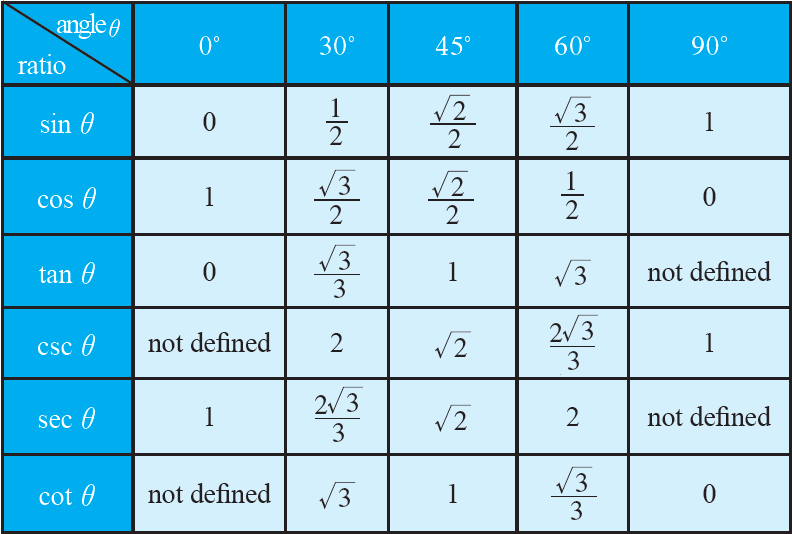SIMPLE AND COMPOUND SURDS
Simple Surd :
A surd having only one term is called a simple surd.
For example,
√2, √3
Compound Surd :
An expression which contains addition or subtraction of two or more surds is called compound surd.
For example,
√2 + √5, √7 - √11 + √3
Note :
Compound surds can further be classified as binomial and trinomial surds.
Binomial Surd :
A compound surd which contains exactly two surds is called a binomial surd.
√2 + √3
Trinomial Surd :
A compound surd which contains exactly three surds is called a trinomial surd.
√7 - √11 + √3
Rules for Simple Surds
Rule 1 :
Product of two simple surds of same order.
√a x √b = √(a x b)
Rule 2 :
Division of two simple surds of same order.
√a/ √b = √(a/b)
Rule 3 :
Surds can be written in exponential form.
√a = a1/2
n√a = a1/n
Note :
1. Surds can not be added.
√a + √b ≠ √(a + b)
2. Surds can not be subtracted.
√a - √b ≠ √(a - b)
Conjugate Surds
Two binomial surds which are differ only in signs (+/–) between them are called conjugate surds.
For example,
√7 + √3 and √7 - √3 are conjugate to each other
3 + √2 and 3 - √2 are conjugate to each other
In a fraction, if the denominator is a binomial surd, then we can use its conjugate to rationalize the denominator.
Comparing Simple Surds
Example 1 :
Which is greater ?
√4 or √6
Solution :
The above two surds have the same order (i.e., 2).
To compare the above surds, we have to compare the radicands 4 and 6.
Clearly 6 is greater than 4.
So, √6 is greater than √4.
√6 > √4
Example 2 :
Which is greater ?
√2 or 3√3
Solution :
The above two surds have different orders. The are 2 and 3.
Using the least common multiple of the orders 2 and 3, we can convert them into surds of same order.
Least common multiple of (2 and 3) is 6.
√2 = 2√2 = 3x2√(23) = 6√8
3√3 = 2x3√(32) = 6√9
Now, the given two surds are expressed in the same order.
Compare the radicands :
9 > 8
Then,
6√9 > 6√8
Therefore,
3√3 > √2
Rationalizing the Denominator
In each case, rationalize the denominator :
Example 3 :
1/(5 + √3)
Solution :
The denominator is 5 + √3 and its conjugate is 5 - √3.
To rationalize the denominator of the given fraction, multiply both numerator and denominator by 5 - √3.
1/(5 + √3) = [1(5 - √3)]/[(5 + √3)(5 - √3)]
Using algebraic identity a2 - b2 = (a + b)(a - b),
= (5 - √3)/[(52 - (√3)2]
= (5 - √3)/(25 - 3)
= (5 - √3)/22
Example 4 :
1/(8 - 2√5)
Solution :
The denominator is 8 - 2√5 and its conjugate is 8 + 2√5.
To rationalize the denominator of the given fraction, multiply both numerator and denominator by 8 + 2√5.
1/(8 - 2√5) = [1(8 + 2√5)]/[(8 - 2√5)(8 + 2√5)]
Using algebraic identity a2 - b2 = (a + b)(a - b),
= (8 + 2√5)/[(82 - (2√5)2]
= (8 + 2√5)/(64 - 20)
= (8 + 2√5)/44
= [2(4 + √5)]/44
= (4 + √5)/22
Example 5 :
1/(√3 + √5)
Solution :
The denominator is √3 + √5 and its conjugate is √3 - √5.
To rationalize the denominator of the given fraction, multiply both numerator and denominator by √3 - √5.
1/(√3 + √5) = [1(√3 - √5)]/[(√3 + √5)(√3 - √5)]
Using algebraic identity a2 - b2 = (a + b)(a - b),
= (√3 - √5)/[(√3)2 - (√5)2]
= (√3 - √5)/(3 - 5)
= (√3 - √5)/(-2)
= -(√3 - √5)/2
= (√5 - √)/2
Kindly mail your feedback to v4formath@gmail.com
We always appreciate your feedback.
©All rights reserved. onlinemath4all.com
Recent Articles
-
Trigonometry Sum and Difference Identities
May 07, 24 09:17 AM
Trigonometry Sum and Difference Identities - Concept - Solved Problems -
Trigonometry Even and Odd Iidentities
May 05, 24 12:25 AM
Trigonometry Even and Odd Iidentities -
SOHCAHTOA Worksheet
May 03, 24 08:50 PM
SOHCAHTOA Worksheet


